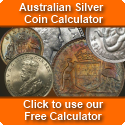
Indian Proclamation Star Pagoda
In my previous entry about Australian proclamation coins I mentioned the gold pagoda of India which was valued at 8s in the proclamation. These small gold coins were a standard gold coin in southern India from the late 16th century. India, at the time, comprised a number of separate kingdoms, some of which were self governing and others which were ruled by the British, French, and the Dutch. The gold pagoda coins were, in fact, minted by the colonial powers in India rather than by the India itself. It is commonly accepted that the gold pagoda mentioned in the proclamation was that minted by the British East India company from 1740 to 1807 as the British link ensured that the coins found their way to many of the English colonies.
The gold pagodas were minted using the ancient hammering technique. Basically small discs or blobs of gold of the correct mass were placed on a reverse die, and the obverse die (the so called hammer die) hammered into the blank coin producing the design. This results in an iregularly shaped coin that can often be weakly struck and the flan can show cracks along the edge. There were two types of gold pagoda coins struck by the East India company. The more commonly found single figure 'star' pagoda is about 11 millimetres in diameter and contained 3.41 grams of 82.3% pure gold. The less common 3 figure pagoda is slightly larger at 12-14 millimetres but contains almost the same amount of gold.
The obverse design of the gold pagoda coins were inspired by coins from the Vijayanagar Empire which ruled southern India before the English. The single figure star pagoda depicts the Indian god, Lord Vishnu. The three figure pagoda depicts the same Indian god, Lord Vishnu flanked by his consorts Sridevi and Budevi. The designs themselves are crude and suited to the manufacturing method of the coin.
Both the single figure star pagoda and the three figure pagoda display a granulated or beaded reverse. However, the 'star' pagoda includes a five pointed star giving this coin it's name.

Indian Proclamation Three Figure Pagoda Madras Mint 1740-1807AD
When looking to purchase a gold pagoda I would look for the best coin affordable with eye appeal. The hammered manufacturing technique means that flan cracks are common so I'd look for a coin with minimal or non distracting cracks. As to whether you should obtain a star pagoda or the three figure coin I'd probably suggest the star pagoda. These are the coins pictured in the Australian coin catalogue 'McDonalds' and were probably more commonly available. However, the three figure pagodas are larger and have more design elements and I find them more attractive. Of course, finances permitting, I'd probably suggest getting both varieties!
Posted by mnemtsas at December 7, 2008 4:01 PM
Subscribe to our Newsletter


